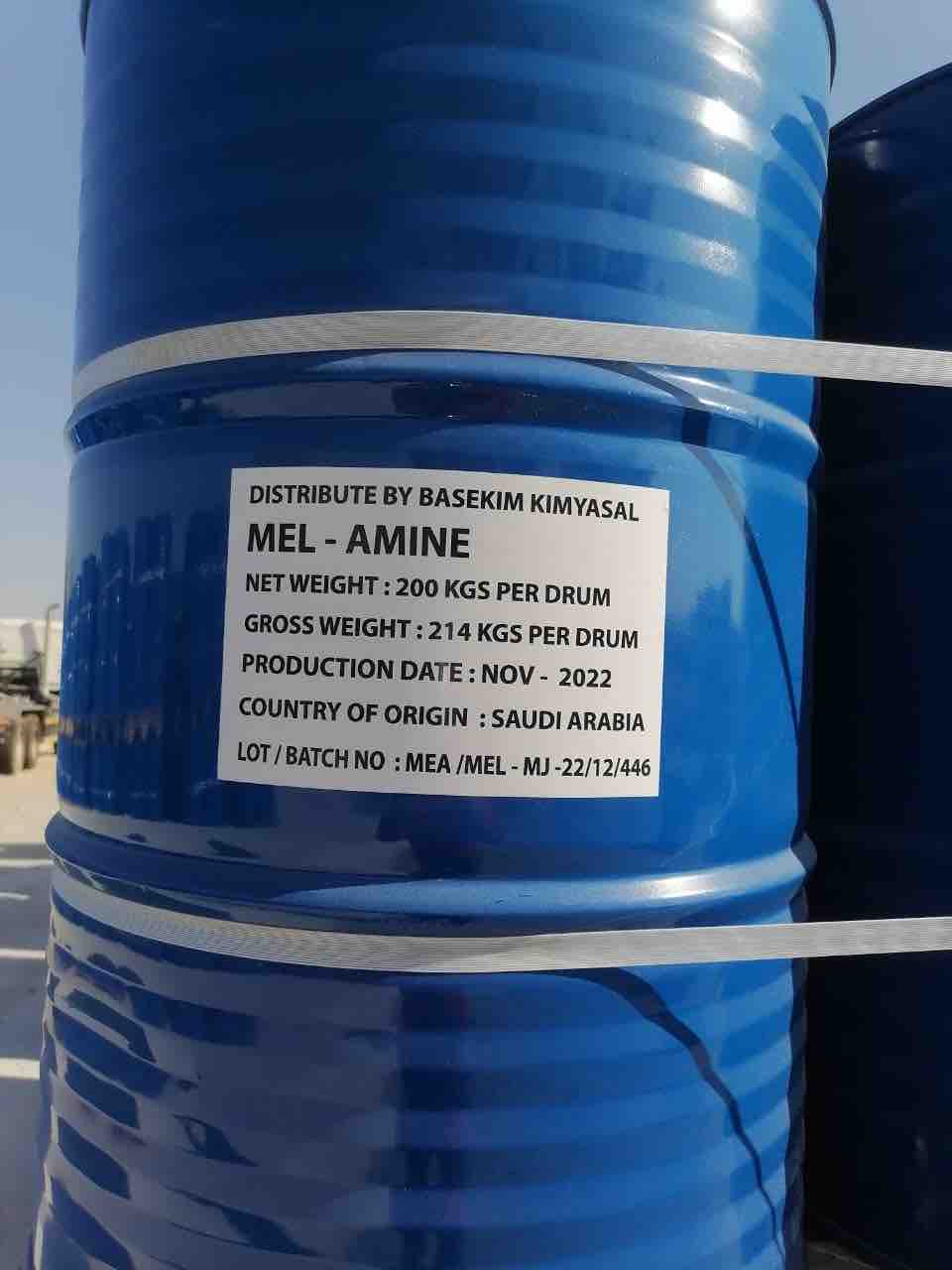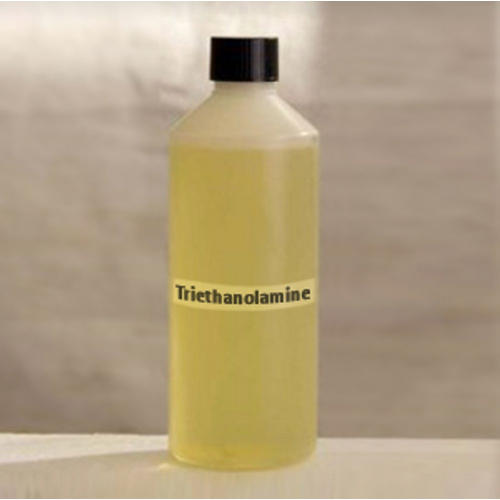
Triethanolamine (TEA) Monoethanolamine (MEA) Diethanolamine (DEA)
- Home
- Triethanolamine (TEA) Monoethanolamine (MEA) Diethanolamine (DEA)

What is Triethanolamine (TEA)
TEA Triethanolamine %85 is a colourless compound although samples may appear yellow because of impurities. TEA Triethanolamine B85 LFG 85% is a low-freeze grade version of Triethanolamine B85, a mix of triethanolamine and diethanolamine. The product is an aqueous blend designed to provide a lower freeze point product for those who can tolerate the presence of water in their applications. Freezing will occur at approximately -9°C versus the 18°C expected for Triethanolamine 85.What is Monoethanolamine (MEA)
Ethanolamine, also known as 2-aminoethanol or monoethanolamine, is a colorless, viscous liquid with a faint odor. It is an organic compound that contains both amine and alcohol functional groups. Ethanolamine is commonly used as a feedstock in the production of detergents, emulsifiers, and pharmaceuticals. In addition, ethanolamine can also be used as a corrosion inhibitor, as a gas-scrubbing agent to remove carbon dioxide and hydrogen sulfide from natural gas and refinery streams, and as a solvent for a variety of substances, including resins, dyes, and waxes. Ethanolamine is also used in the production of certain herbicides, such as glyphosate, and in the synthesis of some amino acids, such as alanine and glycine. However, ethanolamine can be harmful if ingested or inhaled, and it can cause skin and eye irritation. Therefore, proper precautions should be taken when handling this substance.What is Diethanolamine (DEA)
Diethanolamine DEA is primarily used as a gas-scrubbing agent to remove carbon dioxide and hydrogen sulfide from natural gas and refinery streams. It is also used as a surfactant, emulsifier, and corrosion inhibitor in personal care products, detergents, metalworking fluids, and other industrial applications. In addition, Diethanolamine is used in the production of various chemicals, including plasticizers, resins, and pharmaceuticals. It is also used as a solvent in the manufacture of dyestuffs and pigments, as well as in the synthesis of rubber and pharmaceutical intermediates. However, exposure to high concentrations of DEA Diethanolamine can cause skin and eye irritation, as well as respiratory problems, and it can be harmful if ingested. Therefore, appropriate precautions should be taken when handling this substance. The use of DEA in personal care products has been controversial due to concerns over potential health risks, and its use has been restricted in some countries.Differences of TAE MEA DEA
- Chemical Structure: TEA has three hydroxyl groups and one amino group, MEA has one hydroxyl group and one amino group, and DEA has two hydroxyl groups and one amino group. Therefore, the number and positioning of hydroxyl groups and amino groups in each molecule are different.
- Basicity: TEA is the strongest base among the three, followed by DEA and then MEA. This is because the number of hydroxyl groups in each molecule affects its basicity.
- Solubility: TEA is the most soluble in water due to its greater number of hydroxyl groups, followed by DEA and then MEA.
- Viscosity: TEA has the highest viscosity among the three due to its larger molecular size.
- Uses: TEA is primarily used as a surfactant, emulsifier, and pH adjuster in various industrial applications, including personal care products, detergents, metalworking fluids, and gas scrubbing. MEA is commonly used in gas sweetening, oil refining, and the production of herbicides and other agricultural chemicals. DEA is mainly used as a gas scrubber in natural gas and oil refining, and also as a surfactant and emulsifier in personal care products and detergents.
- Toxicity: All three ethanolamines can cause skin and eye irritation, but TEA is considered to be more toxic than MEA and DEA due to its stronger alkalinity and larger molecular size.

Applications Of MEA TEA DEA (ethanolamines)
Gas Scrubbing: Ethanolamine is used as a gas scrubbing agent to remove acidic gases such as carbon dioxide and hydrogen sulfide from natural gas and refinery streams. It reacts with these gases to form stable salts that can be easily removed.
Chemical Intermediates: Ethanolamine is used as a precursor to produce other chemicals such as ethyleneamines, ethylene glycols, and ethylene oxide. These chemicals are used in a wide range of applications, including the production of detergents, textiles, plastics, and personal care products.
Metalworking Fluids: Ethanolamine is used as a component in metalworking fluids such as coolants and lubricants. It helps to improve the lubrication and cooling properties of these fluids and prevents corrosion.
Table of Contents
TogglePersonal Care Products: Ethanolamine is used in a variety of personal care products such as shampoos, lotions, and soaps. It acts as a pH adjuster and emulsifier, helping to stabilize the products and make them more effective.
Herbicides: Ethanolamine is used as a solvent and emulsifier in the production of herbicides and other agricultural chemicals.
Pharmaceuticals: Ethanolamine is used as a pH adjuster and buffering agent in the production of some pharmaceuticals.

In textile:
TEA Triethanolamine %85 using in textile to make the surface softer
Dry cleaning:
It is using as water friendly additive in dry cleaning to prevenient corrosion and remove electricity from the parts.
Welding:
TEA Triethanolamine %85 using in lubricant spray to protect the surface against the corrosion and remove acidity of moistures on.
Cosmetic:
Combination of fatic ascid with Trietanolamine with neutral and create foam in shampoo and other cosmetics.
Other application of TEA Triethanolamine 85%
Adhesives,Agricultural,Cement,Photographic Chemicals,Rubber,Surfactants,Urethane Foams
Specification of TEA Triethanolamine 85%
Property | Specifications | Test Method* |
Appearance | Clear and substantially free matter | ST-30.1 of suspended |
Color, Pt-Co | 50 max. | ST-30.12 |
Equivalent weight | 161 – 173.5 | ST-5.5 |
Triethanolamine | wt% Measure | 70 min |
Water, wt% | 13 – 17 | Loading Measure |
Physical properties of diethanilamine DEA
| Empirical Formula | C4H11N |
| Structural Formula | (C2H5)2NH2 |
| Molecular Wt. | 73.14 |
| Sp. Gr. at 20ºC | 0.703-0.707 |
| Refractive Index at 20ºC | 1.383-1.387 |
| Boiling Point | 55.5°C |
| Freezing Point | below -30°C |
| Solubility in water | Soluble |
| Flash Point (closed cup) | below -18°C |
Specification of diethanilamine DEA
| Purity (by GC) wt. % | 99.65% min. |
| Water Content wt. % | 0.15% max. |
| Impurities wt. % | 0.2% max. |
- IMDG CLASSClass 3
- UN CODE NO.1154
- HSN CODE:2921.19.90
- CAS NO.109-89-7
Physical properties of monoethanolamine MEA
Empirical formula | Ch5n | ||
Structural formula | Ch3nh2 | ||
Molecular wt. | 31.06 | ||
Sp. Gr. At 20ºc | For anhydrous | For 40% soln. | For 45% soln. |
Boiling point | -6.3°c | 48°c | 44°c |
Freezing point | Below -80°c | Below -30°c | Below -30°c |
Solubility in water | Soluble | Soluble | Soluble |
Flash point (closed cup) | – | Below -18°c | Below -18°c |
Specifications of monoethanolamine MEA
Content | Unit | Anhydrous | 40% solution | 45% solution | 50% solution |
Mma | % | 99.50 min. | 40.00 min. | 45.00 min. | 50.00 min. |
Water | % | 00.20 max. | 60.00 max. | 55.00 max. | 50.00 max. |
Ammonia | % | 00.05 max. | 00.03 max. | 0.03 max. | 0.03 max. |
Other amines / noi | % | 00.30 max. | 00.20 max. | 00.20 max. | 00.20 max. |
IMDG CLASS MMA (ANHYDROUS) CLASS 2
MMA (SOLUTION) CLASS3 UN CODE NO.MMA (ANHYDROUS) 1061
MMA (SOLUTION) 1235 HSN CODE:2921.19.90 CAS NO.74-89-5
Physical properties of Triethanolamine TAE
Empirical formula | C3h9n | |
Structural formula | (ch3)3n | |
Molecular wt. | 59.11 | |
Sp. Gr. At 20ºc | For anhydrous | For 30% soln. |
Boiling point | 2.9°c | 37-39°c |
Freezing point | Below -115°c | Below 5°c |
Solubility in water | Soluble | Soluble |
Flash point (closed cup) | – | Below 0°c |
Specifications of Triethanolamine
Content | Unit | Anhydrous | 30% solution |
Tma | % | 99.50 min. | 30.00 min. |
Water | % | 00.20 max. | 70.00 max. |
Ammonia | % | 00.05 max. | 00.03 max. |
Other amines / nol | % | 00.30 max. | 00.20 max. |
IMDG CLASS TMA (ANHYDROUS) CLASS 2
TMA (SOLUTION) CLASS 3
UN CODE NO.TMA (ANHYDROUS) 1083 TMA (SOLUTION) 1297
HSN CODE.2921.11.90 CAS NO.75-50-3
Contact Info
Turkey office:No.6 of Fahrettin Pasa Sokak , Galip Erdem steet, Ilkbahar Mah. Turan Gunes Ave. Çankaya Ankara
Phone: 00903125147055
Dubai office: 3509 of the Burligton tower, business bay, dubai-uae
Phone:0097142369830
E-Mail: [email protected]
